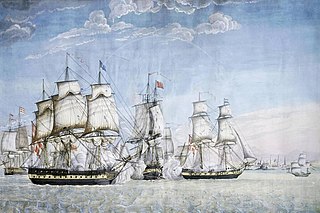
The action of 16 May 1797 was a naval battle that took place near Tripoli in Ottoman Tripolitania. The Danish squadron was victorious over a Tripolitan squadron that outnumbered them in terms of the number of vessels. The result was a peace treaty between the Bey of Tripoli and Denmark-Norway.

Jens Schou Fabricius was the Norwegian appointed Minister of the Navy 1817–1818. He served as a representative for Søe-Deffensionen at the Norwegian Constitutional Assembly at Eidsvoll in 1814. During his naval career he served first the Danish Crown until the separation in 1814 of Norway from Denmark, and thereafter the Norwegian-Swedish Crown. Fabricius retired from the navy as a vice admiral.
The name of Steen Andersen Bille is closely associated with one extended family of Danish naval officers over several generations.
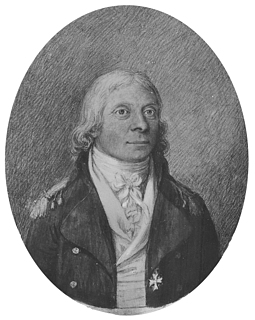
Lorentz Fisker (1753–1819) was a Danish naval officer who charted the waters of southern Norway and the Kattegat, and organised Norwegian defences against Britain and Sweden.
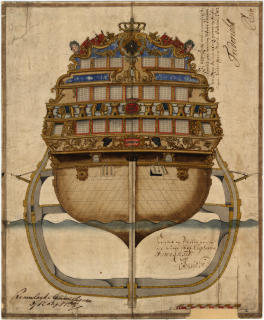
HDMS Elephanten was a ship of the line of the Royal Dano-Norwegian Navy that served from 1703 to 1728. There were three other Danish ships-of-the line of the same name, dating from 1684, 1741 and 1773. The ship was sometimes referred to as Nye Elefant to differentiate from others of similar name. For much of her service career, which coincided with the Great Northern War, Elephanten was the flagship of the Danish fleet active in the Baltic Sea.
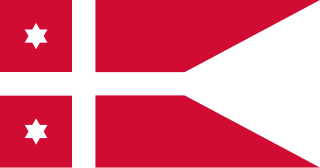
The Chief of the Royal Danish Navy is the professional head of the Royal Danish Navy. The current Chief of the Naval Command is Rear admiral Torben Mikkelsen.
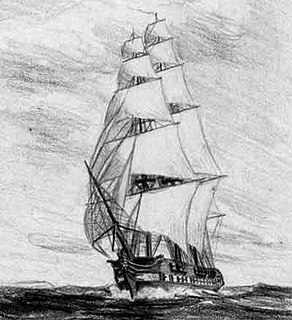
HDMS Bellona was a frigate of the Royal Danish Navy, which she served from 1835 to 1862.
Andreas Lous was a Danish naval officer responsible for early navigational charts of Danish Waters and the dredging of harbours, in addition to sea-time on various Danish warships. He was captain of the ship-of-the-line HDMS Printz Friderich when she ran aground in 1780 near Læsø and was a total loss.

HDMS Printz Friderich was a ship-of-the-line launched in 1764, to a design by Frederik Michael Krabbe, a naval officer and leading ship designer of that period. Two other ships — Norske Løve and Øresund — were constructed to the same design. Little is known of her service history beyond that she received a new keel in 1775. She was lost in 1780. Her wreck was rediscovered in 2018.
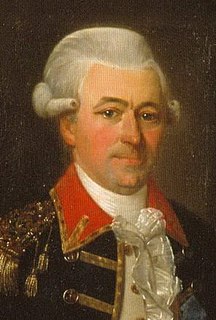
Ernst Wilhelm Stibolt was a Danish naval officer and ship builder, who served in the French navy for four years. and became a member of the Royal Danish Academy of Sciences and Letters.
The family name Stibolt was closely associated with the Danish-Norwegian navy of the 18th century and with the island of Christiansø from the time that Hans Anderson Stibolt was appointed commandant of those most easterly islands of Denmark. His three sons all held naval officer rank, as did many of the subsequent generations, serving with a varied amount of success. Three generations held the post of Commandant on Christiansø.
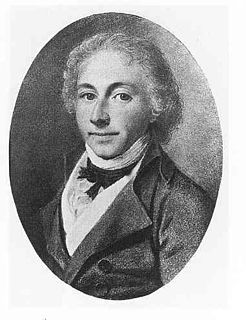
Frantz Christopher Henrik Hohlenberg was a Danish naval officer who specialised in ship design and had little seagoing experience.
HDMS Hvide Ørn , was a light frigate designed by Frantz Hohlenberg and built in Copenhagen. She capsized and was lost with all hands off Corsica at the end of 1799. There were three previous ships bearing this name in the Danish navy. The name was after the loss of the ship retired. An 1898 model of the ship is in the collection of the Royal Danish Naval Museum.

Andreas Schifter (1779–1852) was a Danish naval officer and shipbuilder, a capable naval administrator and admiral. He oversaw the transition of the Danish navy from sail to early steam power.
Rasmus Krag (1680–1755) was a Danish naval officer who first became a junior lieutenant in 1700 and vice-admiral in 1736. He aspired to be a naval architect but his efforts proved unsatisfactory.
HDMS Ørnen (1694) was a frigate in the Royal Danish Navy active during the Great Northern War
Olfert Fasvier Fischer was a naval officer in the service of the Danish crown who became a director of the Danish Asia Company and completed his career as a vice admiral.
HDMS Det Store Bælt (1782) later called Holsten (I), was a Danish frigate.
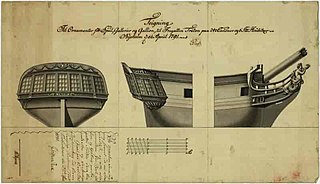
HDMS Triton (1790)
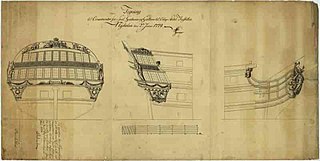
HDMS Justitia was a Royal Dano-Norwegian Navy ship-of-the-line, built to a design by Henrik Gerner. Although launched in 1777, she was not fully commissioned until 1780. The British Royal Navy seized her in 1807, together with the rest of the Danish fleet after the second battle of Copenhagen. The British never commissioned Justitia. A renaming to Orford in 1809 was cancelled. She was broken up in 1817.











